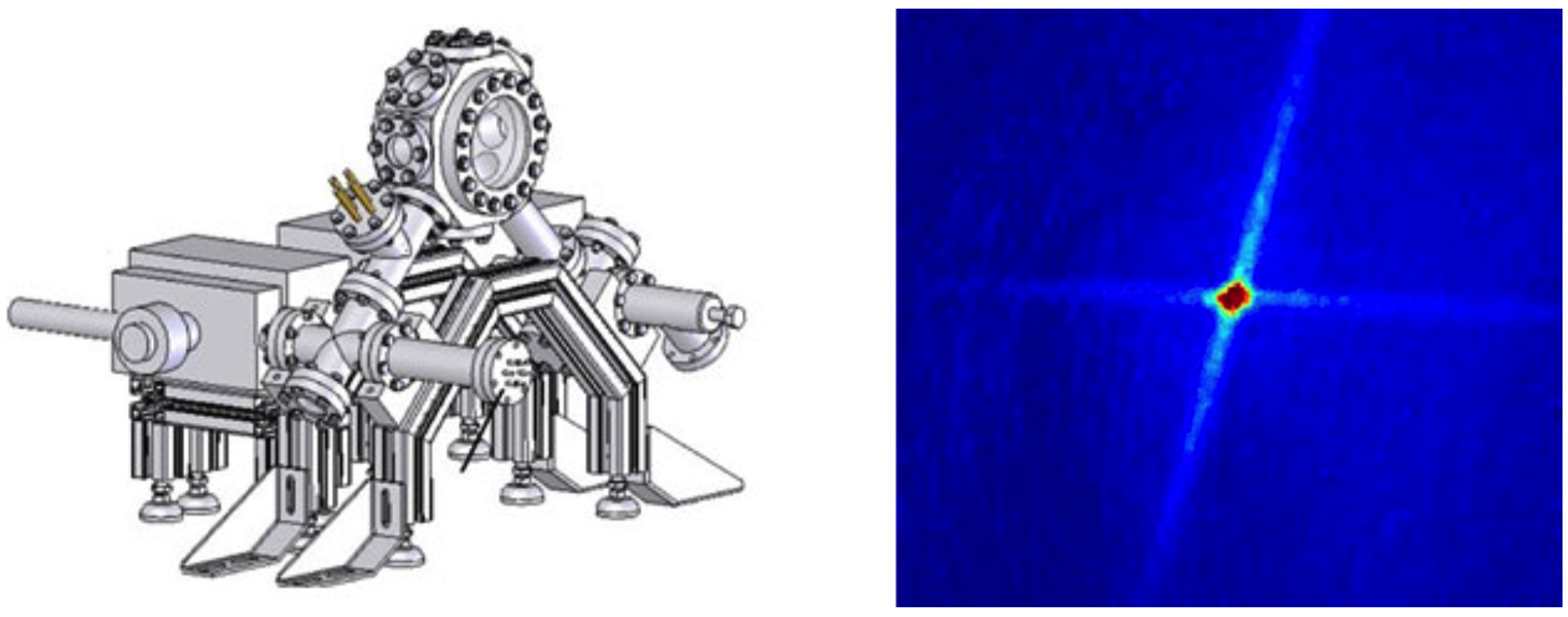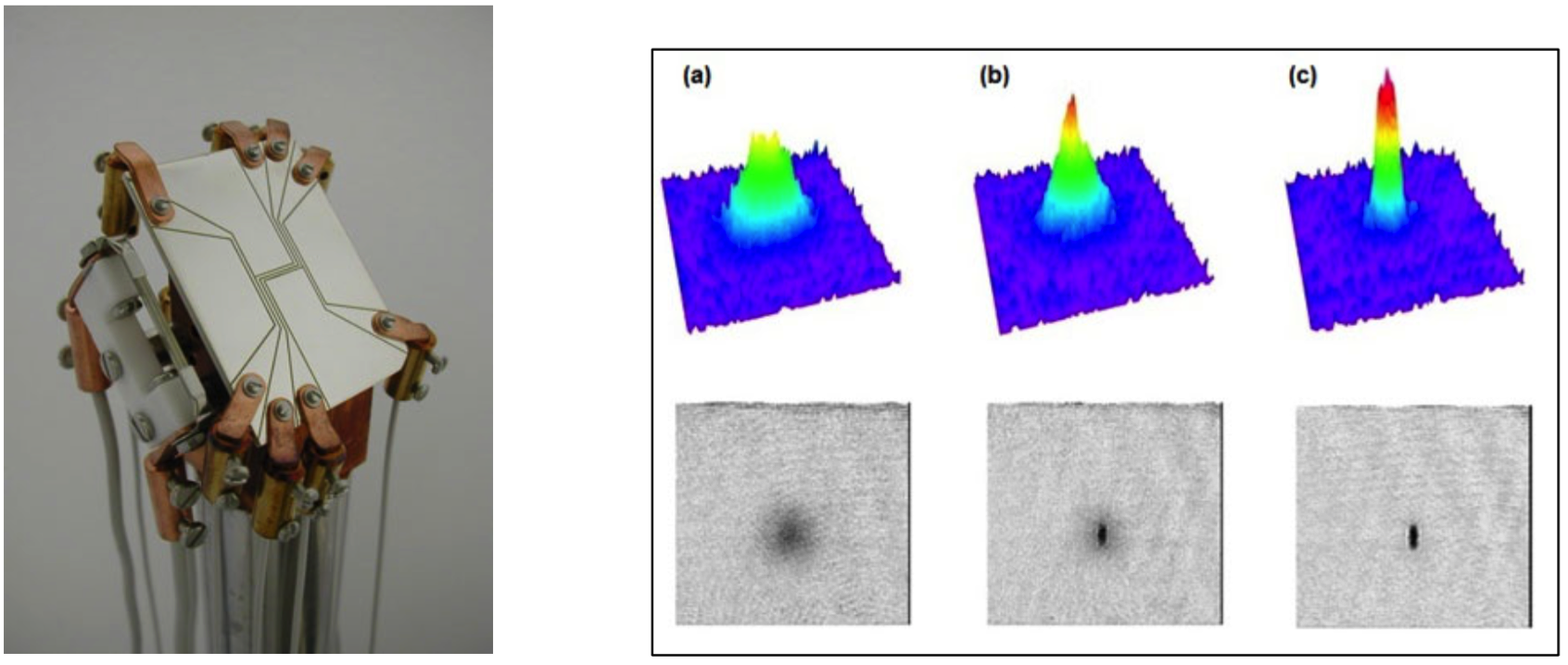There are several BEC experiments that reached the end of their natural lifetime and have since been replaced by the new dmd patterned BECs and time-averaged potentials apparatus.
All-optical BEC experiment
All optical traps for BEC have many advantages over those of conventional magnetic trap geometries, including simplicity of the setup, insensitivity to the spin state, and high BEC production rate. Furthermore, evaporative cooling is achieved by simply reducing the intensity of the trapping dipole beams.
We have built a second setup to produce an all-optical 87Rb Bose-Einstein condensate experiment. Our system starts with a standard magneto optical trap (MOT) loaded in our vacuum chamber from a rubidium dispenser. After a compression and optical molasses stage, the atoms are loaded into a single beam dipole trap overlapping the MOT, formed by a laser operating at 1064 nm, with a beam waist of 27 μm and power of 14W. Our initial conditions in the single dipole trap are ~3×106 atoms, with a temperature of ~250 μK. A first stage of evaporative cooling is performed by lowering the trapping intensity in the single beam. A secondary orthogonal beam is then ramped up in power, compressing the cloud and increasing the collision rate, before both beams are lowered in intensity.

Bose-Einstein condensation on an atom chip
Our experiment creates and manipulate Bose-Einstein condensates (BECs) of 87Rb in magnetic traps formed above current carrying wires on an atom chip (see Figure 1). We first form a magnetic optical trap (MOT) of Rb, with ~ 3 ×107 atoms. These are then transferred to the magnetic trap formed by the wires on our chip surface. RF evaporative cooling is then used to cool the atoms below the transition temperature to BEC. With this apparatus, BEC was observed for the first time at UQ on the morning of Friday 20th February 2004.
[UQ atom chip]
Figure 1. The UQ atom chip for BEC. The chip surface is 125 μm silver foil glued onto a ceramic substrate with epoxy. The silver wires were machined using a CNC mill.
[Absorption images of BEC transition]
Figure 2. False colour absorption images of the atom cloud after 10 ms of ballistic expansion a) Thermal cloud just above Tc, N=60,000 atoms. (b) Transition to BEC with N=40,000 atoms at Tc=250 nK. (c) Almost pure condensate, N=20,000.

